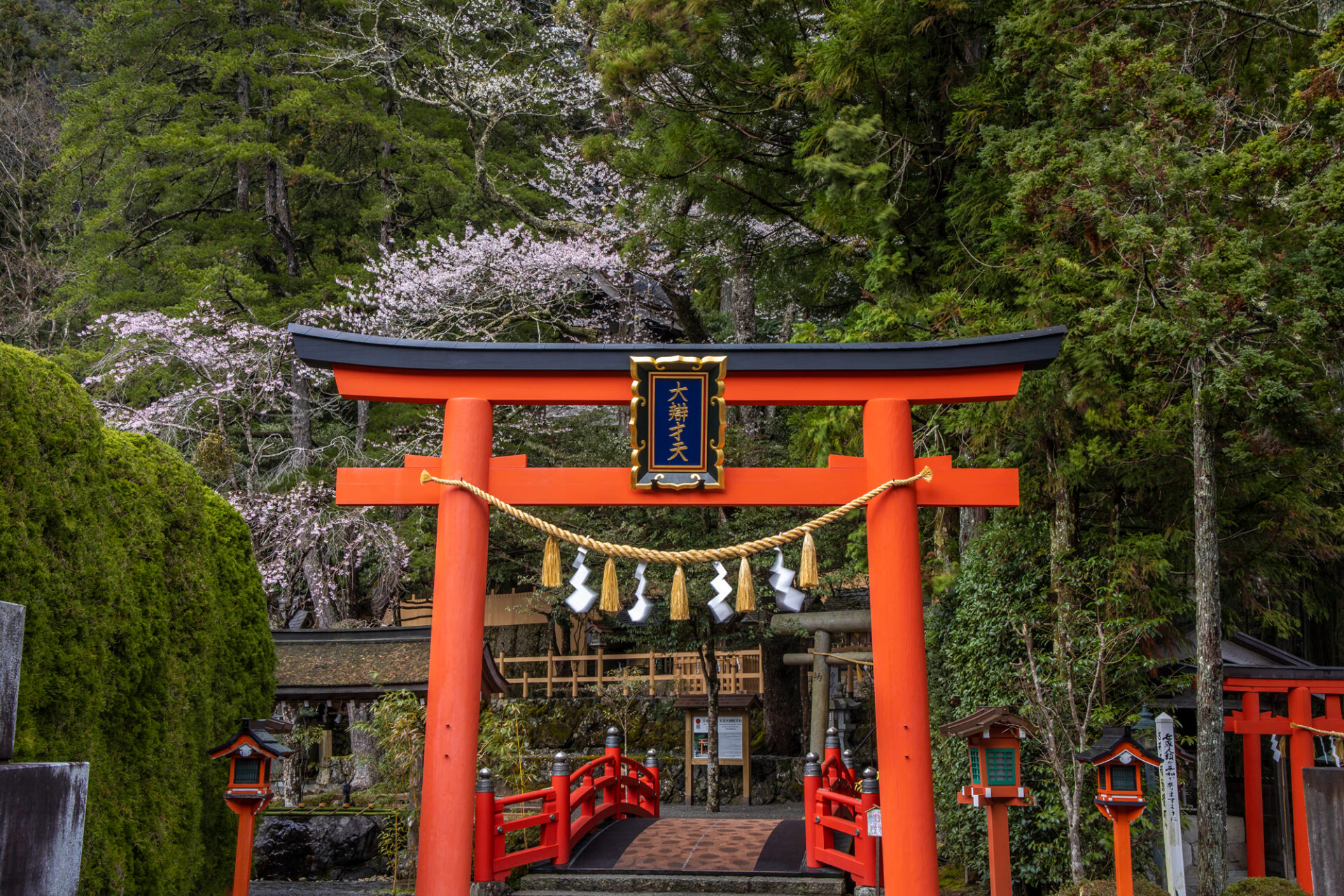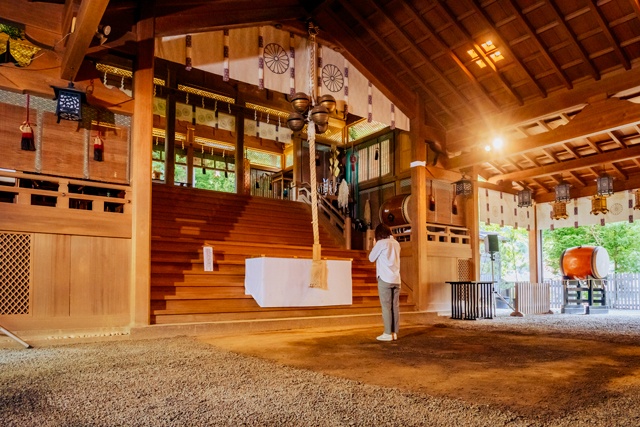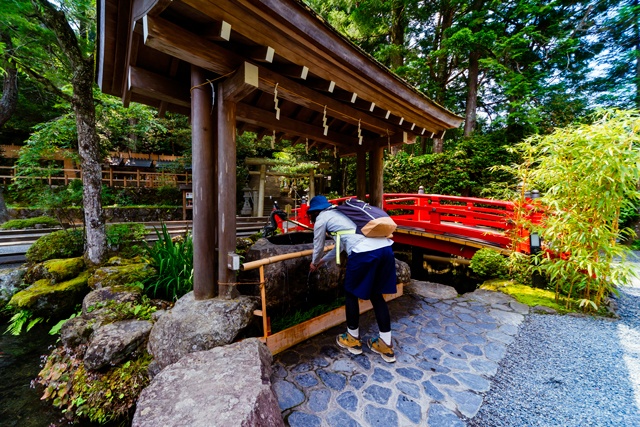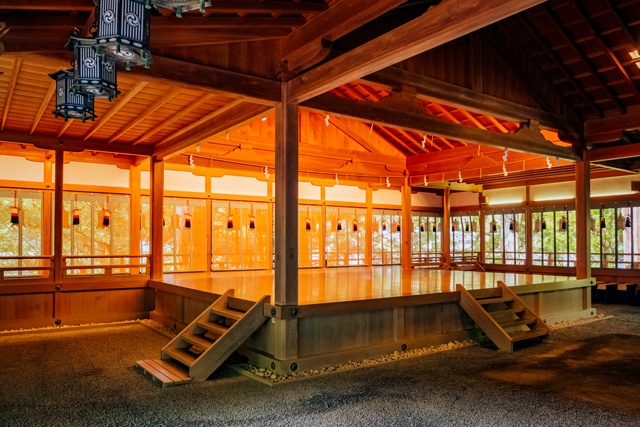
- Japan Heritage
- Central Area
Tenkawa Daibenzai-sha Shrine
The Tenkawa Daibenzaiten Shrine, considered the head shrine of Japan's three major Benten shrines, enshrines Benzaiten, the spirit of water who is also known as the goddess of music and performing arts. Annual Noh performances are dedicated to the deity. The shrine possesses valuable Noh masks, including the Akobujo mask which is believed to have been used by Zeami (the founder of Noh), and Noh costumes. The enshrined deities include the central Benten, Kumano Gongen (Main Buddha: Amida Nyorai) to the right, and Yoshino Gongen (or Kumano Gongen) to the left, maintaining a form of syncretism of Shinto and Buddhism. It is considered a vital spiritual training ground for the Omine pilgrimage, attracting monks and ascetics since ancient times. Especially after the ascetic practice of Kukai (Kobo Daishi), the founder of Shingon Buddhism, the area became a destination for many people, in addition to the Omine pilgrimage and Mount Koya pilgrimage. According to legend, when Imperial Prince Oama (later Emperor Tenmu), who was in a desperate situation during the succession crisis, visited Yoshino, the homeland of the guardian deities of the Yamato Court, and prayed for victory while playing the koto harp, a heavenly maiden adorned with a jewel appeared in response to the sound, blessing the victory in battle. This heavenly maiden is said to be the Misen Okami enshrined by En-no Gyoja at the summit of Mount Misen. The prince, who became Emperor Tenmu after winning the Jinshin War, built a shrine at the foot of the mountain to repay the blessings of the heavenly maiden and named it “Amano Yasukawa Shrine." This is said to be the origin of Tenkawa Daibenzaiten Shrine. It is also said that the name "Amano Yasukawa" became the origin of the region’s name, "Tenkawa." The bells hanging in front of the main shrine hall are unique sacred treasures passed down since ancient times, symbolizing the spirit of unity. In front of the Hai-den hall, there is a Noh stage used for Kagura (sacred Shinto dance), Noh performances, musical dedications, weddings, and other events. Besides the main hall, explore the Gosha-den Hall in front of the stone steps, and the Misogi-den Hall which is a 10-minute walk from the precincts. Various unique rituals are performed during the numerous annual events.



The shrine houses cultural properties designated by the village.
(Click on each cultural property’s name to be directed to the detailed page on the website of the Tenkawa Village Office)
Read rules and manners for enjoying Tenkawa Village
-
Address
107 Tsubouchi, 638-0321
-
Tel
0747-63-0558
-
Website
-
Note
Parking lot available
 Tenkawa Village Sightseeing Website
Tenkawa Village Sightseeing Website